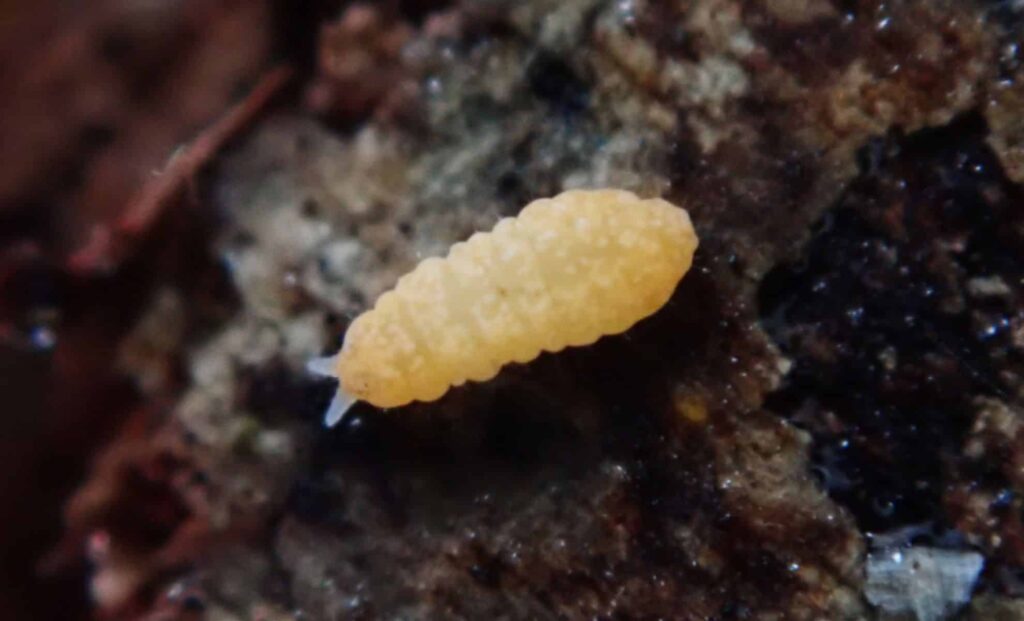The discovery took place on Tsushima Island in Japan, where Hiro Kasai and his team were studying the tiny, six-legged soil animals known as springtails. These insects, which measure just 0.06 to 0.07 inches long, play a crucial role in breaking down decaying organic matter, helping to recycle nutrients in the soil. This new species, officially named Paranura tsushimaensis, adds to a growing list of springtail species found in Japan and underlines the significance of preserving natural habitats like dead wood, which are critical to biodiversity.
Springtails: Tiny but Mighty
Springtails, part of a larger group of hexapods, are often overlooked due to their size, but they are key players in forest ecosystems. These insects are detritivores, meaning they feed on decaying plant material and fungi, helping to break down organic matter and contribute to nutrient cycles in the soil. As scientists increasingly study their behavior and adaptations, it’s becoming clear how vital they are to maintaining the health of ecosystems, especially in forests.
While they might seem insignificant due to their small size, springtails perform tasks that larger organisms simply can’t. They help decompose organic material, making nutrients available for plants and other organisms. According to Kasai, these creatures not only contribute to recycling nutrients but also maintain the ecological balance of forests by spreading microbes that support soil fertility.

Four New Paranura Species Identified
In addition to the Paranura tsushimaensis, Kasai’s research team also identified four other new Paranura species across different sites in Japan. These species were found in environments ranging from the evergreen forests of Tsushima Island to the high mountain areas of Mount Syakagatake. Paranura species, which are often adapted to specific microhabitats, exhibit remarkable morphological differences, such as varied eye numbers and pigmentation, reflecting the conditions in which they live.
For example, the Paranura tsushimaensis, discovered on Tsushima Island, has six black eyes arranged in neat rows and is a striking blue color. The Paranura nakamurai, found on Sado Island, is a pale yellow-white species, while the Paranura alpicola, discovered in Nara, is yellow with a thick body. Lastly, Paranura convallis, found in Murou, Nara, is short and stout with orange coloring.
According to Kasai’s team, these variations in morphology, including differences in body color, eye numbers, and setae patterns, are likely adaptations to different stages of wood decay or moisture levels in their respective habitats. The findings suggest that environmental gradients, such as changes in humidity or light exposure, drive the evolution of these tiny creatures.


Why Dead Wood Matters for Biodiversity
The discovery of these new species highlights the importance of dead wood in forest ecosystems. Many springtail species, including the Paranura, are saproxylic, meaning they depend on decaying wood for food and shelter. This makes them sensitive to changes in forest management practices that reduce the availability of dead wood. According to a U.S. Forest Service study, saproxylic species, including beetles and springtails, are highly vulnerable to the loss of this habitat.
Preserving dead wood is crucial for maintaining biodiversity, as it provides not only food and shelter for these small creatures but also a habitat for a wide range of other organisms. Kasai’s research emphasizes that protecting these microhabitats can have far-reaching benefits for the entire ecosystem. Ensuring that fallen branches and decaying wood are preserved during logging or park maintenance helps support a diversity of species, many of which remain hidden from sight due to their small size.
The discovery of these new species in Japan is just the beginning. Kasai’s team plans to continue exploring the forests of Japan, hoping to uncover even more springtail species. With Japan’s varied mountains and coastlines, each region presents a unique environment that could harbor undiscovered species. By targeting specific areas like mountain valleys, evergreen forests, and coastal regions, researchers expect to find more species that are crucial to understanding the biodiversity of Japan’s ecosystems.

